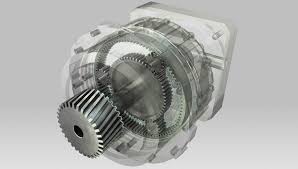Mobile:+86-311-808-126-83
Email:info@ydcastings.com
small block exhaust manifolds
Understanding Small Block Exhaust Manifolds
Exhaust manifolds play a crucial role in the efficiency and performance of an engine, specifically in small block engines. Often used in various vehicles, including cars and trucks, small block engines are renowned for their lightweight structure and balance between power and fuel efficiency. The exhaust manifold is a key component that collects exhaust gases from multiple cylinders and directs them into a single pipe, ultimately leading to the exhaust system. This article will delve into the purpose, design considerations, manufacturing process, and performance implications of small block exhaust manifolds.
Purpose of Exhaust Manifolds
The primary function of an exhaust manifold is to collect and channel exhaust gases away from the engine. In a small block engine, which typically has multiple cylinders arranged in a V configuration, the manifold ensures that gases from each cylinder are efficiently routed. This helps maintain optimal engine performance by preventing back pressure that could hinder the engine's ability to expel gases. Additionally, a well-designed exhaust manifold contributes to improved fuel efficiency and reduced emissions, aligning with today’s environmental standards.
Design Considerations
When designing a small block exhaust manifold, several factors must be taken into account
1. Material Selection Common materials include cast iron, stainless steel, and sometimes aluminum. Each material presents distinct advantages and disadvantages. For instance, cast iron is durable and can withstand high temperatures, while stainless steel is more resistant to corrosion but can also be more expensive.
2. Shape and Size The geometry of the manifold can significantly impact the performance. A manifold with a smooth, contoured shape can minimize turbulence and enhance the flow of exhaust gases, improving overall engine efficiency. Additionally, the size of the primary tubes and the collector area can influence the power output—wider tubes can reduce back pressure but may sacrifice low-end torque.
3. Heat Management Exhaust gases can reach extreme temperatures, so effective heat management is essential. Insulating coatings or heat shields can help protect surrounding components and enhance the lifespan of the manifold.
4. Compatibility and Fitment The manifold must fit seamlessly with the engine and other parts of the exhaust system. This requires precise measurements and design to ensure that installation is straightforward and does not introduce exhaust leaks.
small block exhaust manifolds

Manufacturing Process
Exhaust manifolds are typically made through casting or fabrication processes.
- Casting This traditional method involves pouring molten metal into a mold that shapes the manifold. Cast iron is commonly used due to its heat resistance and durability. Once cooled, the castings are machined to meet precision standards.
- Fabrication In contrast, fabrication entails welding various sections of metal together to create the manifold. This method allows for more intricate designs and can accommodate custom requirements, making it suitable for performance applications.
Modern manufacturing technologies like 3D printing are also beginning to influence the production of exhaust manifolds, offering rapid prototyping and more intricate designs.
Performance Implications
The design and material of small block exhaust manifolds significantly affect engine performance. Performance-oriented manifolds are often designed to decrease exhaust back pressure, which can lead to increased horsepower and torque. Additionally, manifolds that promote better gas flow can improve throttle response and engine efficiency.
Aftermarket exhaust manifolds are popular among enthusiasts looking to enhance their vehicle's performance. Upgrading to higher-flow designs can result in noticeable improvements, especially in modified engines. However, it's essential to strike a balance, as overly aggressive designs might reduce low-end power, making the vehicle less drivable in certain situations.
Conclusion
Small block exhaust manifolds are vital components that influence the performance, efficiency, and emissions of an engine. Their design, materials, and manufacturing processes all play a crucial role in determining their effectiveness. Whether for street use or racing, understanding the intricacies of exhaust manifolds can help car enthusiasts make informed decisions about engine modifications and upgrades. The evolution of technology in manufacturing and materials science promises to further enhance the potential of these essential engine components, ensuring that the legacy of small block engines continues to thrive in the automotive world.
-
Why Should You Invest in Superior Pump Castings for Your Equipment?NewsJun.09,2025
-
Unlock Performance Potential with Stainless Impellers and Aluminum End CapsNewsJun.09,2025
-
Revolutionize Your Machinery with Superior Cast Iron and Aluminum ComponentsNewsJun.09,2025
-
Revolutionize Fluid Dynamics with Premium Pump ComponentsNewsJun.09,2025
-
Optimizing Industrial Systems with Essential Valve ComponentsNewsJun.09,2025
-
Elevate Grid Efficiency with High-Precision Power CastingsNewsJun.09,2025











